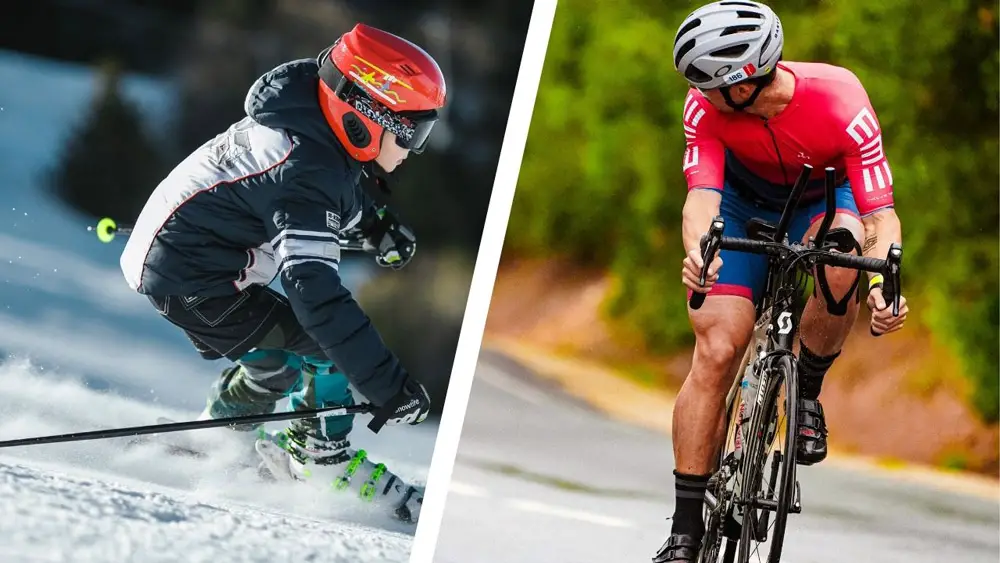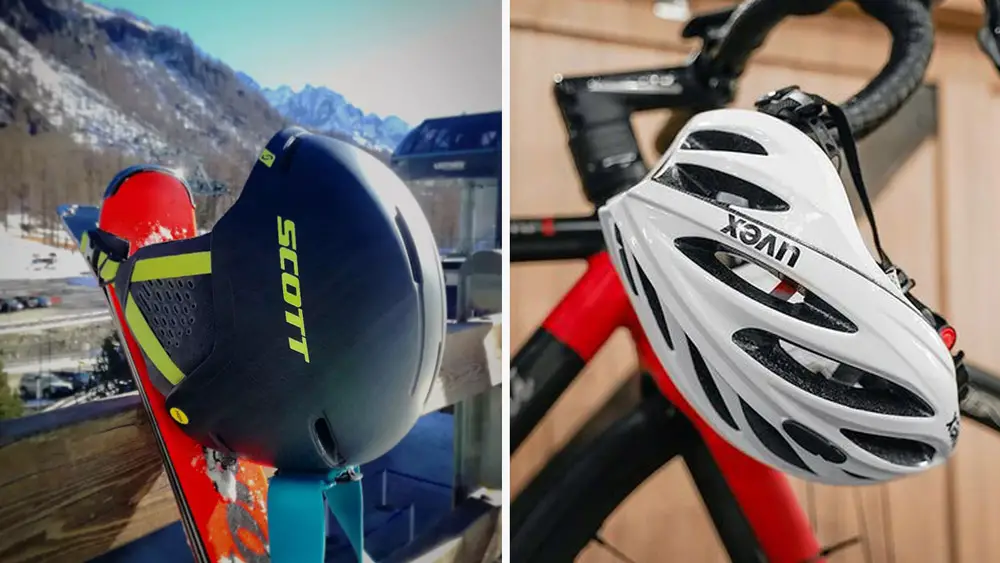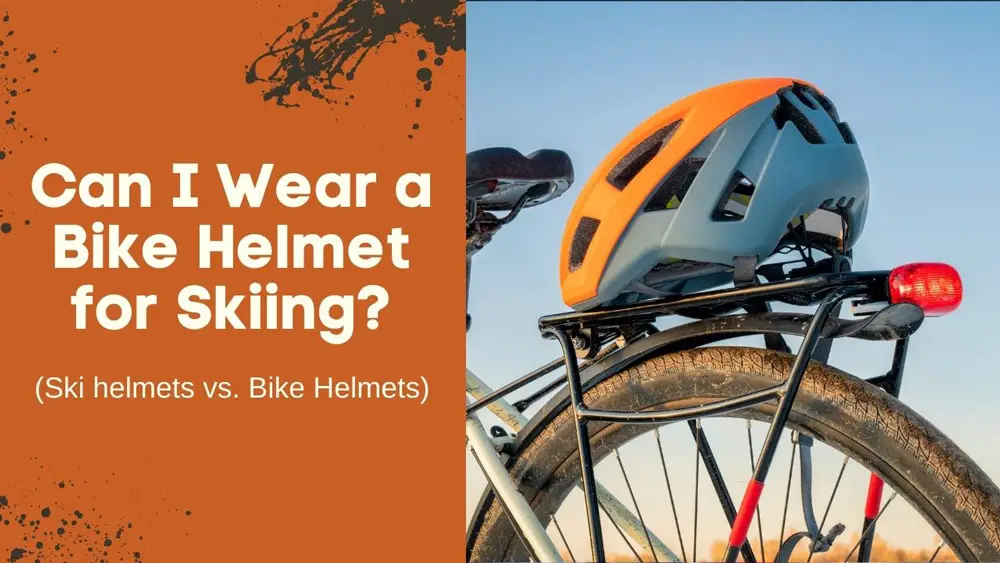For me, ultimate freedom is what I live for; there is nothing better than tearing through deep snow or tackling tightly wound trails with your horse-inspired steed.
Before you try snowboarding or skiing, safety should always be your number one priority. It is always a good idea that you have the proper protective gear. Whether a beginner or an advanced skier, a good helmet matters.
When I was still new to the sport, I asked my friends can I wear a bike helmet for skiing when I didn’t have a ski helmet? At that time, it does make a lot of sense. Both helmets protect the head from potential impacts. But then, I learned the big difference between the two helmets.
In this article, we are going to compare ski helmets vs. bike helmets.
Can I Wear a Bike Helmet for Skiing?
Yes, but only a few. You can wear a bike helmet for skiing only when it is ASTM F2040 or Snell RS-98, S-98 -compliant. These certifications mean that the bike helmet meets the minimum safety requirements for skiing and snowboarding. Aside from that, most bike helmets are not made to handle the cold temperatures on mountains because they do not have insulation.
Ski helmets vs. Bike Helmets

Both ski helmets and bike Helmets will protect your head from any single impact. But there are still some differences between them.
Safety Certifications
The biggest difference between bike helmets and ski helmets is the safety standards. Ski helmets are required to have an American Society for Testing and Materials (ASTM) F2040 and Snell RS-98, S-98, or European CE EN 1077 certification. On the other hand, bike helmets are almost mandatory. They must meet the Consumer Product Safety Commission (CPSC) safety standard, a legal requirement for all helmets manufactured for sale in the United States.
| Bicycle | Ski/Snowboard | |
|---|---|---|
| Type of impact | Single | Single |
| Safety Standards | ASTM F1447, F18981 Snell B-90A, B-95, N-942 CPSC | ASTM F2040 Snell RS-98, S-98 EN 1077 |
Ski Helmet Safety Certifications
Safety certifications prove that the helmet can offer enough protection during impact. Unfortunately, there are no standard safety certifications in the US.
However, the American Society of Testing Materials (ASTM) F2040 safety standard is considered by many as the gold standard when it comes to snow sport helmets. It is also known for having a more stringent approach than the European Economic Community (ECC) CE 1077 safety standard used for skiing and snowboarding helmets. However, both standards can give you an idea that the helmet can offer you some level of protection.
The ECC tests the ski helmet by dropping the helmet at a speed of 5.42 m/s on a flat anvil. However, the impact shouldn’t exceed 250 g.
ASTM, on the other hand, drops the ski helmet at 6.2 m/s on a flat anvil. Plus, ASTM also drops the helmet on a hemispherical and wedge-shaped anvil. The peak acceleration shouldn’t go beyond 300 g. It means that you are more protected if the ski helmet passes the ASTM standards.
Check out the long helmet standards comparison here: Bicycle Helmet Safety Institute
Impact Protection
First, the design of a ski helmet is different because it offers more coverage for protection. A ski helmet covers the back and the sides of the head. A bike helmet only covers the top of the head.
If you are going to compare cycling and skiing, the average skiing speed is 10 to 20 mph. Olympians could even reach 95 mph on their ski. Typically, snowboarding or skiing is twice faster as regular cycling.
This is why ski helmets are developed for higher impacts than bike helmets.
Aside from the shell, ski helmets have more padding that can also help absorb the blow. When you are on the slopes, there is no room for error. One minor lapse in judgment could result in serious injury or fatality.
Goggle Compatibility
Goggle compatibility is another feature that makes ski helmets different from bike helmets. Ski helmets come with slots or cut-outs on the sides and front so that goggles can be attached securely, which is also prevents the goggle strap from slipping and minimizes pressure on the temples.
Warmth
If you’re still not convinced at this point that having a ski helmet is a must when skiing, you have to consider the fact that skiing is done in cold environments. For ski helmets, not only does it cover the ears, it has padding that can insulate heat, keeping you warm when doing the activity. Unfortunately, that’s something that bike helmets can’t offer.
Fit
Ski helmets and bike helmets should also feel snug but not too tight. It shouldn’t move around for both helmets when you rock your head back and forth.
The strap system is also different for ski and bike helmets. Ski helmets use a locking chin strap to keep the helmet securely in place even when you are skiing at high speeds. Bike helmets use a simple strap system that goes under the chin. The problem with this is that it can easily come off when you are involved in an accident.
Weight
Ski helmet shells are usually thicker to provide more protection. Bike helmets need to be lightweight so that they won’t add too much weight when cycling.
Visors
Ski helmets also have visors to protect your eyes from the sun and debris. Unless it’s an MTB bike helmet, you rarely see a road bike helmet with a visor because it can obstruct your vision, especially when you’re on the drops.

Ventilation
Ventilation is one of the features that you should consider when buying any type of helmet. For bike helmets, it is important to have large vents so that air can easily circulate and keep your head cool. Ski helmets also have vents, but they are typically smaller and adjustable.
Final Thoughts
In the end, it is up to you if you want to wear a bike helmet when skiing. Remember that a ski helmet has more features that can protect against higher impacts, and it is also designed to keep you warm in cold environments.
Given all the things that we’ve mentioned, using a bike helmet for skiing is not advisable. Ski helmets are designed specifically for snow sports. But if you plan on buying one, make sure that the helmet has the necessary safety certifications. This is the only way you can be sure that the helmet offers enough protection on your head.


